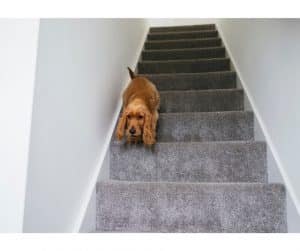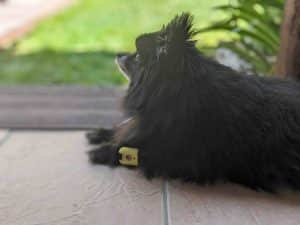Bane, an 18-month-old Rottweiler, has faced a challenging medical history. This young dog was brought to Steve Denley, director at Balance Veterinary Care in Australia, by his owner Lynette.
Concerned about behavioral issues potentially linked to pain, Lynette sought answers. This case highlights the complexities of veterinary medicine and the crucial role modern tools like Tendiboots may play in supporting diagnosis and treatment decisions.
About Dr Steve Denley

Dr. Steve Denley, founder of Balance Veterinary Care in Australia, is a highly qualified veterinarian with a passion for integrative therapies and rehabilitation. His professional journey was inspired by a personal experience with his pet greyhound, Henry, who found relief from debilitating pain through acupuncture—a moment that profoundly shaped Dr. Denley’s career.
Steve is graduated from the University of Queensland in 1998 with a Bachelor of Veterinary Science (BVSc) and has spent over 25 years practicing small animal medicine in South East Queensland. Driven by a desire to continuously enhance his skills, he pursued advanced certifications and training in complementary and integrative therapies:
🎓 Certificate of Veterinary Acupuncture (CVA) – Chi Institute.
🎓 Certified Traditional Chinese Veterinary Herbologist (CVCH) – Chi Institute and China Society of Traditional Chinese Veterinary Medicine.
🎓 Graduate Diploma in Animal Biomechanical Medicine (GradDip ABM) – Box Hill Institute.
🎓 Certification in Clinical Integrative Canine Rehabilitation – College of Integrative Veterinary Therapies.
Dr. Denley is advancing his expertise with the Certified Canine Rehabilitation Therapist program from the Canine Rehabilitation Institute. He is also is a member of the organizations:
🇦🇺 Animal Biomechanical Professionals Australia
🇺🇸 American Association of Traditional Chinese Veterinary Medicine
🇺🇸 American Canine Sports Medicine Association
Dr. Denley’s practice focuses on combining conventional veterinary methods with integrative approaches, such as acupuncture, biomechanical medicine, rehabilitation therapies and objective data tools. This balanced approach allows him to treat both the symptoms and underlying causes of animal health issues, improving outcomes for his canine patients.
Bane’s Medical History: A Complex Foundation
Bane’s medical journey began early in life. At just 19 weeks old, he underwent bilateral tibial crest surgery to address orthopedic issues. Unfortunately, complications arose due to implant failure, making his recovery long and arduous. Bane was confined to a crate for months and did not begin walking until he was nine months old.
Despite his recovery, Lynette observed moments when Bane seemed “a little off,” struggling with behavior and obedience. Concerned that pain might be contributing to these issues, she sought professional advice. Although Bane now shows good functional ability—performing zoomies and climbing stairs without pain—these concerns remain significant.

Steve Denley’s Approach to Bane’s Care
When Bane arrived at Balance Veterinary Care, Steve conducted a thorough assessment. He used the Tendiboots accelerometer system to analyze Bane’s gait. Here’s how Steve described the findings and the journey:
“Gait analysis with Tendiboots in trot with four trials revealed average offloading of the right fore (24.8%) and offloading of the hind quarters (hind 33%/fore 67%). Visual gait assessment revealed subjectively reduced hind leg extension and drive.”
The initial evaluation highlighted mild physical restrictions:
➡️ Slight neck restriction on the right side.
➡️ Mild crepitus in the left stifle.
➡️ Even and strong musculature in the forelimbs, core, and hind limbs.
Steve treated compensatory issues and recommended a follow-up assessment in six to eight weeks. During the reassessment on October 11, 2024, using the Tendiboots system, Steve found similar results to the initial analysis:
“Offloading of the right fore (25% less than the left fore, as previously observed) and hind (68% fore, 32% hind). These findings have raised concern that pain may be a factor in Bane's behavioral issues.”
Steve expressed specific concerns about arthritic changes in both stifles and minor congenital forelimb issues given Bane’s breed and age. He recommended a three-week anti-inflammatory trial, followed by reassessment using Tendiboots.
If improvements are observed—either in behavior or weight-bearing symmetry—Steve may consider further diagnostics, such as radiographs, or initiate a tailored rehabilitation program.
The Role of Objective Data in Veterinary Medicine
Bane’s case highlights the value of objective data in guiding veterinary decisions. According to Steve:
“This case shows the usefulness of the Tendiboots gait analysis tool. It is a non-invasive, quick and inexpensive monitoring tool for biomechanical issues.
I usually tell owners it is "like a screening blood test" for lameness. It does not give us a diagnosis but is a helpful screening tool to help us decide if there may be an issue or if we have a dog that is biomechanically sound. If we have assymmetry in gait we may consider then progressing to more expensive diagnostic procedures or pursuing a rehab program .
In the case of Bane we are still not sure if we are "overcooking" or "undercooking" his issues but Tendiboots can help guide us in this decision making process.”

Conclusion: A Technology-Driven Path to Wellness
While Bane’s journey is ongoing, the insights gained through Steve Denley’s expertise and tools like Tendiboots are shaping a thoughtful and evidence-based approach to his care.
Cases like Bane’s demonstrate how modern veterinary practices can blend clinical experience with innovative technology to improve outcomes for animals and their owners.
For veterinarians and pet owners alike, Bane’s story is a reminder of the power of data-driven decisions in navigating complex medical challenges.











One Comment
Suzi Ironmonger
I have an almost 8 yo entire male ACD who was a show, working and performance dog until an accident in Oct. 2024 when we assume that he got caughr in a loose wire fence because the fence was mangled and the dog lame. Several vets, including a veterinary chiropractor have seen him, his xrays and come up with different thoughts. Basically, his iliofemoral ligament is stretched out and his hip badly subluxated. Osteo vet wants to do hip replacement. I have been taking him to hydrotherapy and he now uses the leg (hind right) again but still not full use and still some muscular atrophy. Can you help him or assess things as no vet so far has seen this injury and knows what we sould do. He won’t accept acupuncture, either. He was fine with several needles and tben one must have hit a hotspot and he reacted. I used to be a Vet Nurse and I worked last for a Chiropractic Veterinarian in California. We are at Childers, Qld. I can send you the xrays.